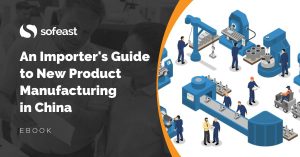We talk to a startup company developing a new physical (hardware) product at least once a week, and I’d estimate that about 25% of them try hard to secure a patent.
I get it. They are afraid of being copied. They know investors and customers will like it. It looks like a wise investment. And, of course, not many lawyers will discourage a patent application, which is — for good reason — in their list of the best ways to protect a new product’s intellectual property.
However, here is the harsh reality.
Out of 100 people who have an idea for a new hardware product, set up a company to develop it, and are afraid of being copied, how many actually get to market and are successful enough to do a 2nd batch and third batch at a profit? 5? 10? Probably not many more than that. Maybe 20.
(Remember, it often comes with a lot of complexity if it is seen as patent-worthy, and complexity comes with a lot of costs and high risk.)
As a consequence, we think that spending time and money on a patent application is not a wise business decision for many hardware startups.
We are not the only ones. Here are three other people who seem to hold that view.
Some key names who feel that patent applications aren’t a good investment for hardware startups
John Teel from Predictable Designs recently wrote on this topic. In Why Patents Are a Death Trap for Entrepreneurs and Startups, he wrote:
Your first priority should be proving that there is a market for your tech device or electronics gadget. Don’t worry yet about protecting your product. There is no point in spending money and time to protect something that may not have any value.
Before spending thousands of dollars on a patent you should spend time executing on your idea. This means proving your idea is worth the investment of time and money.
Around 97% of patents that are filed ultimately fail and never see the light of the market. These are horrible odds so don’t ever start with a patent.
John Teel provides useful information about patents in the USA. He points out that a “provisional patent” is often a good solution in the short term. I suggest you read his article in full.
Derek Sivers, who wrote the great book ‘Anything You Want’, touched on this same topic in Ideas Are Just a Multiplier of Execution:
To me, ideas are worth nothing unless executed. They are just a multiplier. Execution is worth millions.
Explanation:
AWFUL IDEA = -1
WEAK IDEA = 1
SO-SO IDEA = 5
GOOD IDEA = 10
GREAT IDEA = 15
BRILLIANT IDEA = 20
——–NO EXECUTION = $1
WEAK EXECUTION = $1000
SO-SO EXECUTION = $10,000
GOOD EXECUTION = $100,000
GREAT EXECUTION = $1,000,000
BRILLIANT EXECUTION = $10,000,000
To make a business, you need to multiply the two.
The most brilliant idea, with no execution, is worth $20.
The most brilliant idea takes great execution to be worth $20,000,000.
That’s why I don’t want to hear people’s ideas.
I’m not interested until I see their execution.
Consultant Eric P Rose, who advises on new product developments, likes to remind his audience that, as research has shown, 42% of startups that fail, fail because they deliver something the market does not value.
That’s the number one reason for startup failure!
The bottom line?
- Make sure you know your target users. Make sure they have a sufficient “pain” (a source of motivation, a job to do…) and the retail price is not too high.
- Keep your product as simple as possible in version 1. Work as much on your marketing channels as you do on the technical (development) side.
- Pick the right options when it comes to design & prototyping, to the type of manufacturer, etc.
- Be ready for a long and hard journey. Bringing a new physical product to market is not easy.
- Don’t start with a patent application, except if you are in “deep tech”… and, at the same time, listen to your lawyer because he can help you on other fronts!
*****
Let me know your thoughts on applying for a patent (or not), especially if you are a hardware startup!
Disclaimer
We are not lawyers. What we wrote above is based only on our understanding of the regulatory requirements. QualityInspection.org does not present this information as a basis for you to make decisions, and we do not accept any liability if you do so.
P.S. Read more blog posts related to hardware startups and their needs right here.
Are you designing, or developing a new product that will be manufactured in China?
Sofeast has created An Importer’s Guide to New Product Manufacturing in China for entrepreneurs, hardware startups, and SMEs which gives you advance warning about the 3 most common pitfalls that can catch you out, and the best practices that the ‘large companies’ follow that YOU can adopt for a successful project.
It includes:
- The 3 deadly mistakes that will hurt your ability to manufacture a new product in China effectively
- Assessing if you’re China-ready
- How to define an informed strategy and a realistic plan
- How to structure your supply chain on a solid foundation
- How to set the right expectations from the start
- How to get the design and engineering right
Just hit the button below to get your copy (please note, this will direct you to my company Sofeast.com’s site):


